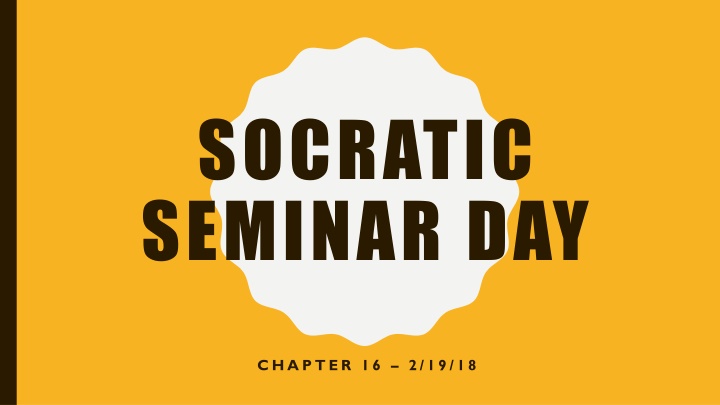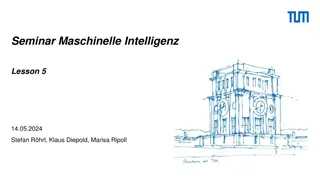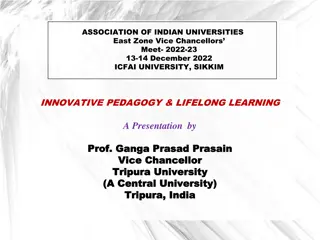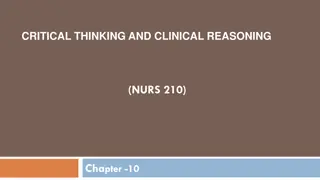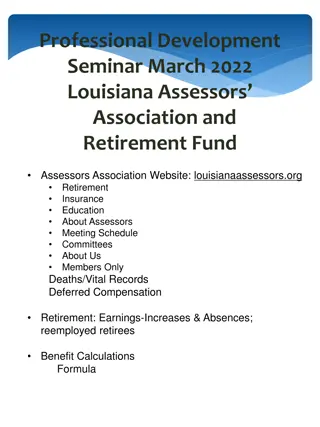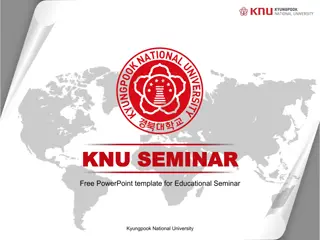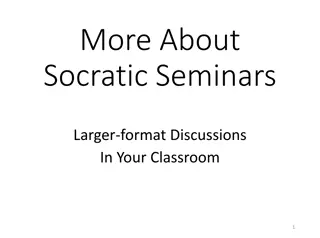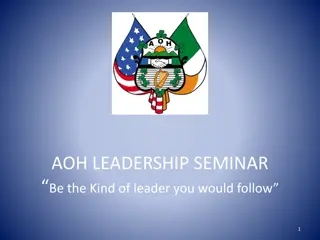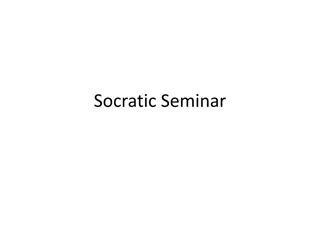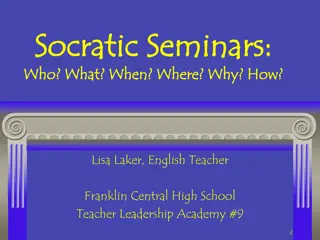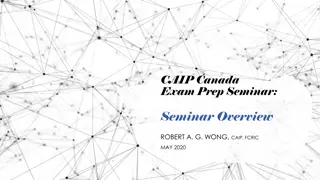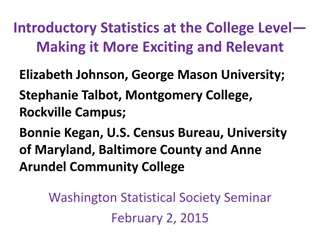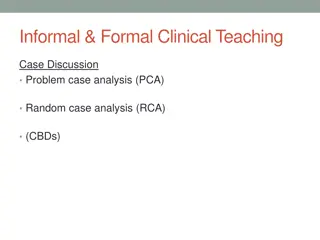Socratic Seminar Insights
Historical events such as the French Empire, Latin American independence, and social revolutions discussed in a Socratic seminar. Dive into the dynamics of alliances, independence movements, and societal changes. Gain a deeper understanding of the interconnectedness of nations and revolutions through insightful discussions.
Download Presentation

Please find below an Image/Link to download the presentation.
The content on the website is provided AS IS for your information and personal use only. It may not be sold, licensed, or shared on other websites without obtaining consent from the author.If you encounter any issues during the download, it is possible that the publisher has removed the file from their server.
You are allowed to download the files provided on this website for personal or commercial use, subject to the condition that they are used lawfully. All files are the property of their respective owners.
The content on the website is provided AS IS for your information and personal use only. It may not be sold, licensed, or shared on other websites without obtaining consent from the author.
E N D
Presentation Transcript
SOCRATIC SEMINAR DAY CHAPTER 16 2/19/18
BELLWORK: BLOCK 1 Look on page 791 and identify the states or regions that belonged to the French Empire, those that were allied with Napoleon, those that were dependent states, and those that remained at war with France. Answers will vary. Is there a connection between a state s distance from Paris and the degree to which it was allied with France? Yes, there is a relationship. The closer the nations that were not separated by water were to France geographically, the more tightly they were woven into the fabric of the French Empire. What caused the slave revolt on Saint Dominigue? The revolt was triggered by rumors that the French king had already declared an end to slavery. Slaves burned 1,000 plantations and killed hundreds of whites as well as mixed-race people. Look on page 795 and answer the following: After Haiti, when did the first Latin American colony gain independence? Paraguay gain independence in 1811. How long did it take for the last country on the map to gain independence? Venezuela gained independence in 1830, nineteen years after Paraguay. Which colonies did not gain independence? Cuba, Jamaica, Puerto Rico, British Guiana, Suriname, and French Guiana these were colonies of nations other than Spain. Why did these areas not gain independence so quickly as the others? They were sugar-producing areas that were very valuable.
The AP exam always features questions about how people see themselves and others, known as questions of identity. Creole elites had a lot of political and social influence throughout Latin American history, so they are an important subject on the AP exam. You should know the role of Simon Bolivar in leading Latin American revolutions in the nineteenth century. A trend throughout these Latin American revolutions is that women did not gain many political or social rights until the early twentieth century. You need to know that Europe experienced three decades of political revolution in the first half of the nineteenth century. AP EXAM TIPS The abolition of slavery in the Atlantic world was the greatest political and social achievement of the nineteenth century. It s important to know that the end of slavery led to a reemergence of indentured servitude in the Caribbean sugar plantations. Take notes on all the ways nationalism was promoted by political and cultural leaders and the media. Study the paragraph at the bottom of pg. 802, as an example of writing that is full of specific evidence.
OPTIC Occasion Answers The period before the revolution.The cartoonist is attempting to highlight class divisions. Chained man under a noble, a member of the clergy, and perhaps a judge or member of the government. Oppression of the Third Estate by the First and Second Estates. The rich are riding on the peasant and enjoying the ride despite the clear misery of the peasant. Class division is clear, and this cartoon s purpose is to incite the Third Estate into rebelling against oppression and abuse. Parts Theme Interrelationship Conclusion
OPTIC Occasion Answers The illustration depicts the victory of the Haitian army over the French army. The foreground shows a hanging in progress in which a prisoner is being hauled up by his neck.In the background, it appears that many more hangings are in various stages. The painting seems to be documenting the end of the battle and the revenge that the Haitian army took on the French army. The mountain terrain seems to hide the numerous hangings. The figure in the foreground seem to relish the hangings. The figures in the background make it clear that numerous hangings are happening simultaneously. Revenge is clearly widespread and complete. Parts Theme Interrelationship Conclusion
REALLY A REVOLUTION: Historians argue that even though the American Revolution did not totally destroy the social order and in many ways maintained the status quo, it did create a republic. It allowed for the immediate enfranchisement of all white men, which eventually led to citizenship for slaves and women. One historian describes the word revolution as both a circle and a break and explains how the American Revolution serves as an example of both. Lastly, a good example of the subtlety of the American Revolution is the difference between being a citizen and being a subject of the Crown. Citizenship requires active involvement in state, whereas being a subject implies allowing others to make decisions.
CRASH COURSE 29, THE FRENCH REVOLUTION The Declaration of the Rights of Man and Citizen gave liberty, equality, and security to all men at least in theory. It also insisted that law applied equally to all and that all men whether directly or through their representative become involved in making laws. The idea that laws come from citizens and not from kings or from God, and that they should apply to everyone equally, was radical because the French had been ruled by a hereditary crown whose divine right to govern had never before been challenged.
CRASH COURSE 16, WOMEN IN THE 19THCENTURY 1. Coverture is the legal right of men to own the person, property, and choices of the women in their lives. Women needed an education so they could teach their children, especially the boys who would vote and participate in government. The cult of domesticity required women to stay home if they could afford to do so, so they could focus their attention on maintaining a good and happy home. Women were seen as the moral compass of the home, and thus also the moral compass of the nation. Women wanted the right to vote in order to shut down saloons and in order to help pass laws that would protect their property and their families from drunken men. 2. 3. 4. 5.
SOCRATIC SEMINAR CHAPTER 16 1. Do revolutions originate in oppression and injustice, in the weakening of political authorities, in new ideas, or in the activities of small groups of determined activists? The influence of revolutions endure long after they ended and far beyond where they started. To what extent does this chapter support or undermine this idea? Did the Atlantic revolutions fulfill or betray the goals of those who made them? Consider this question in both short and long-term perspectives. (Now and Then) Answer the Essential Quetions to the left. BE PREPARED TO DISCUSS!!!!! 2. Develop 2 analytical questions for EACH EQ that YOU will ask during the discussion and will be responsible for answering in GC. 3. For HOMEWORK you will fill in the questions that you developed and you will answer the Essential Questions. These are DUE TONIGHT at MIDNIGHT!
